Spotlight on Military Readiness
Held this spring at Tyndall AFB, Readiness Challenge X welcomed an unprecedented number of engineer teams from across service branches and allied nations, reinforcing readiness across the U.S. military and international partners.
By Col. Kurt Muller, M.SAME, USAF
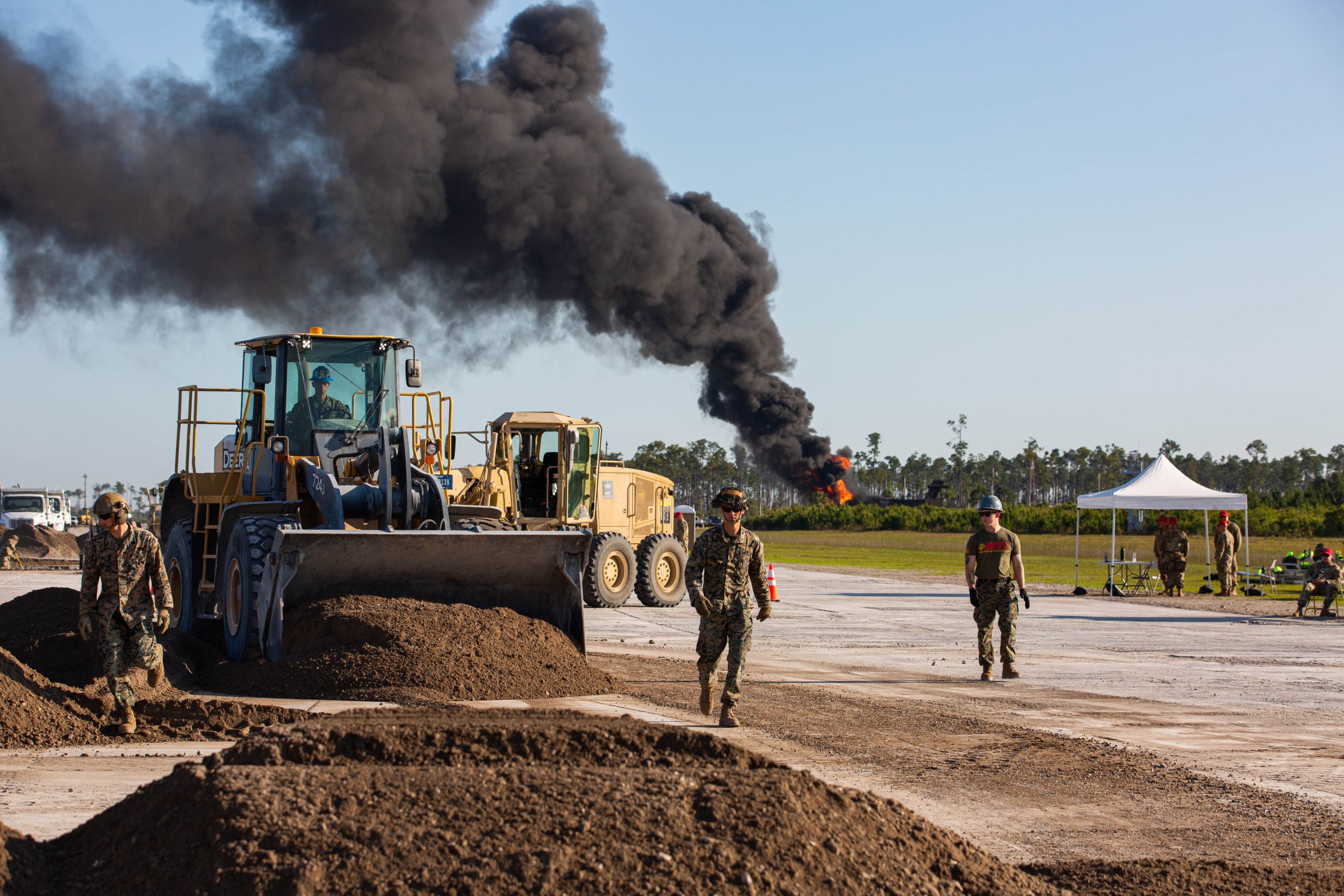
Held in April 2024 at the 801st RED HORSE Training Squadron Operating Location within Tyndall AFB, Fla., Readiness Challenge X exceeded last year’s full operational capability by accommodating more teams and challenges, more service branches, more nations, and more military engineers.
The multi-day event was hosted by the Air Force Civil Engineer Center, a primary subordinate unit of the Air Force Installation Mission & Support Center, and the 801st RED HORSE Training Squadron. A total of 12 teams competed, comprising over 540 civil engineers, sappers, and services personnel from the Department of the Air Force, U.S. Army, U.S. Marine Corps, and a joint coalition entry that included members from the U.S. Space Force, Royal Canadian Air Force, and Dutch allies.
More than 25 event challenges during the competition were designed to measure a wide range of core civil engineering and services disciplines. Each team battled head-to-head in a simulated contested deployment environment. They demonstrated their capability to respond, repair, and recover base operations with limited resources.
The grueling six days tested participants in power production, potable water distribution systems, live fire operations, aircraft arresting systems, the ability to perform duties under staged chemical attacks, explosive ordnance disposal, runway construction and repair, heavy machinery operation, and many other wartime tasks. With the addition of sister services from the Army and Marines, as well as coalition partners and allied forces who joined the teams, Readiness Challenge X was an effective environment to engage with engineers across the world and see where their strengths are. The friendly competition only further enabled the esprit de corps of the services, which deepened the commitment of each team to get the most of their training.
Foundational Training
Readiness Challenge originated in 1986 at Eglin AFB, Fla. A foundation was set for it to become the Air Force’s capstone civil engineering event to test critical operations in a warfare environment. In 2001, the events were cancelled due to Operation Enduring Freedom and Operation Noble Eagle. The challenge would remain on hold for nearly two decades. Then in 2019, beta tests began to bring the challenge to Tyndall, and the next official Readiness Challenge VIII was held in 2022.
When the event first originated nearly 40 years ago, it was about engineering and services—PRIME BEEF and PRIME RIBS—so it was a priority to reincorporate members of the Air Force Services Center in Readiness Challenge X.
Overall, participation increased to 12 teams this year, recovering airfields and performing the testing and expedient tactics, techniques, and procedures that services teammates bring to the fight. A total of four airmen from the Air Force Services Center affiliated with each team, not only as a support arm, but to participate with their engineering teammates. Their performance was graded by cadres in two competitions: building an outdoor Single Pallet Expeditionary Kitchen; and Babington Diagnostics, which tested their ability to troubleshoot mobile kitchen equipment.
Additional newcomers this year included the Army, Marine Corps, Coalition Team, Expeditionary Air Base, and a pair of participants from the Netherlands who joined the returning U.S. Air Forces in Europe and Air Forces Africa team. Other returning major command teams included the Air Force Reserve Command, Air Education & Training Command, Air Force Global Strike Command, Air Force District of Washington combined with Air Force Special Operations Command, Air Combat Command, Pacific Air Forces, and Air Mobility Command.
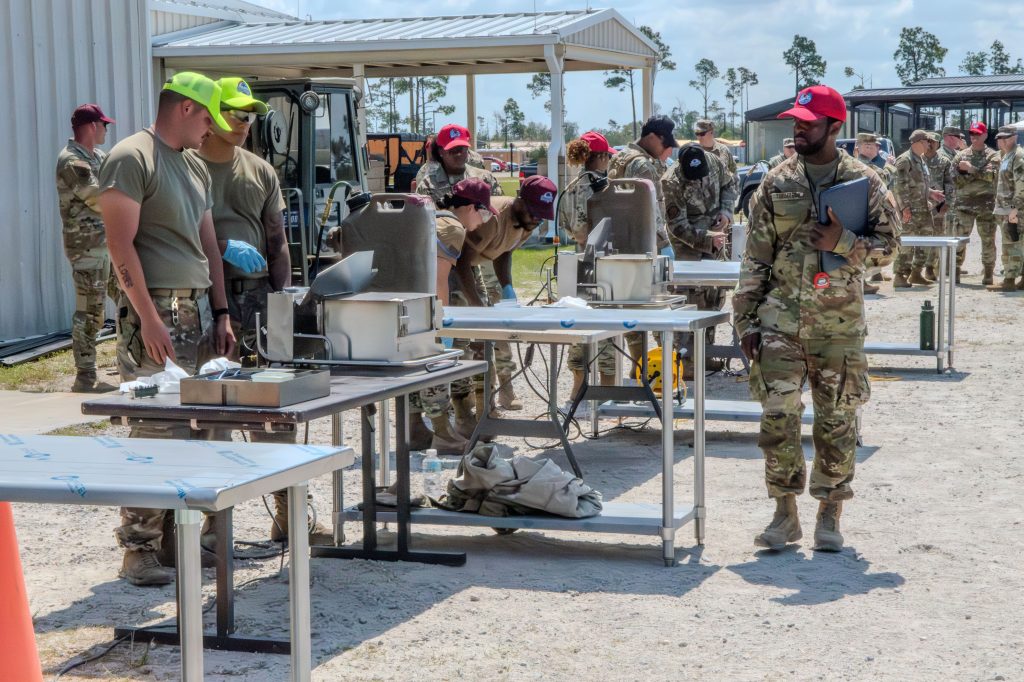
Strengthening Posture
The Readiness Challenge offers a controlled environment with realistic problems that the servicemembers have to face in a deployed environment today. The setting challenges them in a way they would be confronted in a Great Power Competition. The teams must think rapidly, come together as a unit, and solve problems using the skills they inherently have in their toolbox.
Although it was a tough environment during the week, sleeping in tents and eating MREs, there were no unhappy faces. A collegial atmosphere developed as participants figured out problems, maximized what they learned, and learned what to improve on. They also were able to provide feedback and ideas for different exercises to add in the future.
Teams were evaluated and scored on performance and their ability to conquer the challenges. Results allowed leadership and career field managers to assess each unit, find resolutions for deficiencies, and identify training opportunities to strengthen posture and reoptimize in support of strategic interests.
From the Ground Up. While the Department of the Air Force reoptimizes for Great Power Competition, it is also concentrating on joint and international opportunities to increase integration and interoperability between U.S. military branches and allied partners. For example, the Army’s Readiness Challenge team noted that the Army and Air Force maintain a lot of the same skill sets, just different focus areas and language.
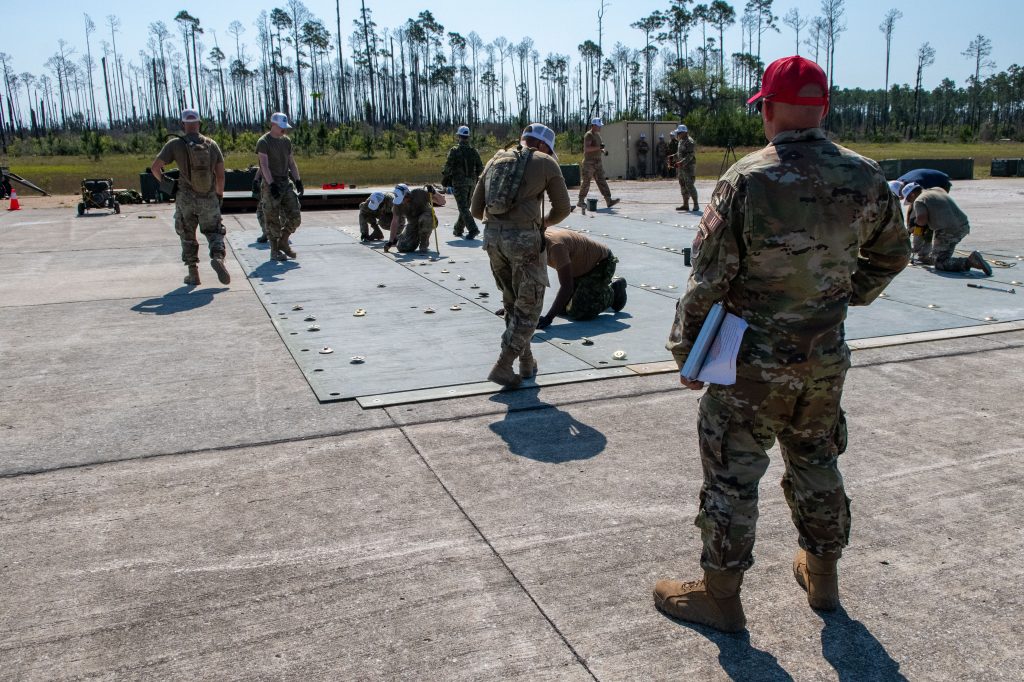
The actual onsite tasks may have differed from the capabilities the Army engineers train on, but it did not take long for the soldiers to get up to speed and perform as an interoperable, capable force. During the Fog of War event, teams were required to establish an operational base camp location from the ground up in a contested contingency environment. The Army’s combat engineers said it felt like they were dropped in a location with personnel and equipment to set up what they would call a tactical operation command center, with mission objectives coming down from headquarters for what they needed to accomplish. The event was an important test of their ability to communicate, prioritize tasks, make decisions, and react and recover from an attack.
Field-Level Experience. The allied partners present for the exercise gained important interoperability benefits that can shape how they move forward with deployment preparation back home.
Members from the Royal Canadian Air Force, for example, explained how their contingency training is with completely different equipment than the technology the Air Force uses. They used Readiness Challenge X as an opportunity to increase interoperability between their construction engineers and the Air Force, as well as gain more experience in the field with the downrange equipment they will use when deploying together.
Invaluable Exposure
Throughout the challenge, teams competed with the mindset of deploying as wings in potential austere locations—generating combat power, disaggregating to different bases for survival, or re-aggregating for effect. All of these elements comprise schemes of maneuvers the Air Force will need to accomplish. The airmen earned valuable training time on them at Readiness Challenge X.
Each team agreed that the challenge exposed them to tactics and equipment they had not seen before. Of particular concern to the organizers had been that the evaluated events correspond to the latest evolving threats. Refining readiness skills, comradery, and healthy competition had not changed. But how the Department of the Air Force accomplishes wartime tasks as well as the equipment and technology being used has very much evolved to meet those threats. This includes creating Air Task Forces that will test new methods to generate more efficient, integrated units that will evolve into deployable combat wings.
As the Air Force looks at how to construct the teams needed for a future fight, Readiness Challenge will continue to grow and include more sister services and foreign partners. Increasing sister services and coalition involvement will strengthen the exercise; but the event is more than just a competition: it is preparing engineering forces for the near-peer threat and strategically messaging that we are training together with multi-service international engagement to continue to strengthen deep partnerships.
Moving ahead, the goal now is to increase participation for the 2026 iteration of the Readiness Challenge to include more services and more countries. Training collaboratively increases the ability of the engineers to maximize their individual talents and strengths while also, most importantly, forming a cohesive, interoperable team—a joint force poised and prepared to take care of the problems this new Great Power Competition has presented.
Executing Under Pressure
Readiness Challenge X tested participants on a broad range of military engineering tasks necessary to perform in a deployed environment. The winning team from a multi-national group of competitors came from Air Force Global Strike Command.
Crane Event: Crane operators following hand signals navigate a 55-gal drum filled with concrete through a serpentine course to lift it over a double stacked CONEX and work their way back.
Crush Stone Crater Repair: Two teams race head-to-head in a test for heavy equipment operators to repair a runway. Teams have four hours using a crushed stone backfill to reach the California Baring Ratio standard of repair.
Expeditionary Airfield Lighting System and Mobile Aircraft Arresting System: Teams install a 1,000-ft solar EALS kit at an airfield while simultaneously laying out a marking system for an operational aircraft arresting system.
Telehandler Competence Course: Teams use heavy equipment to pick up a set of racks that hold material and drive them through a coned course, then return the racks to the start.
Live Fire: Firefighters extinguish a live jet-fuel fire and rescue a dummy from inside a C-130 aircraft fire simulator.
Counter Small Unmanned Aircraft System: A drone is down, and operators have to assess and mitigate hazards, then neutralize the aircraft. Event tests Explosive Ordnance Disposal capabilities.
CBRN Defense Response: Teams identify chemical, biological, radiological and nuclear hazards and go through the proper cordoning, reconnaissance, and evaluation of the agent.
Rapid Explosive Hazard Mitigation: Teams clear an attacked airfield of explosive hazards to mitigate risks to personnel.
Fiber Reinforced Polymer Install: Teams install 800-lb fiber reinforced polymer panels over crushed stone to repair airfield craters.
Refrigerator Operations: Teams troubleshoot, fix, and return expeditionary refrigerator units to service.
Reverse Osmosis Water Purification: Teams turn saltwater into drinking water by drawing the water from the bay through a series of filters, chemicals, and electricity, then test it for safe consumption.
Bird Aircraft Strike Hazard: Two participants from each team shoot pellet rifles from three positions at targets 5-m, 10-m, and 20-m away to simulate mitigating bird hazards.
CBRN Command & Control Operation: Teams in a simulated command and control environment (and wearing protective equipment) determine potential agent plumes.
RADR Warehouse: A safety and proper loading and handling test where warehouse operations managers retrieve Rapid Airfield Damage Repair material safely out of a CONEX with a telehandler, move it, and prepare it for use.
Guard Shack Build: Teams have limited time to build a guard shack using provided design drawings, materials, and tools.
SPEK: A timed event in which four Air Force Services Center participants and up to four additional team members build a single pallet expeditionary kitchen.
BEAR Power Unit: Teams set up deployed Basic Expeditionary Airfield Resources power generation kits including a remote access program to configure and connect to the unit to produce high power electricity.
Power Plant Operations: An evaluation of each team to successfully configure settings in a primary switching center to relay power from the power unit and distribute it.
Geospatial Expeditionary Planning Tool: Teams are evaluated on their ability to use GeoExPT to plan a dispersed beddown of forces.
Joint Tactical Communications: Teams program radios to a specific frequency, set up a repeater antenna, and test radio operation.
Babbington Install: An Air Force Services Center event tests how teams respond to operational issues in food heaters.
Pallet Build Up: Firefighters load equipment on a pallet, then tie and net correctly and secure it for loading on aircraft.
BEAR Water System: Two teams go head-to-head setting up a Basic Expeditionary Airfield Resources water system to make a latrine system operational by connecting source water to a pump, installing lines and valves, and connecting to latrine plumbing.
Sprayer Calibration: Pest management teams calculate the amount of chemicals to use with pest sprayer equipment and test to make sure it works correctly.
Fog of War: A complete team evaluation scenario with multiple tasks to establish a contingency location. Tasks include digging sites to the correct depth and dimensions, facility utility connections, and more. Teams simultaneously receive additional orders to respond to tasks at separate locations. Scenario includes gas attacks and conflicting order inputs.
Warrior Course: A timed team capstone event in which the teams each run a 3-mi course to complete small expeditionary objectives at 13 stations. Tasks include carrying full buckets of concrete material 1,000-ft or more and addressing equipment and weapons malfunctions.
Holistic Preparation
While the Readiness Challenge may be the pinnacle of civil engineer collaboration, it is also just one of several elements in the Air Force’s holistic preparation toolkit. There are many certification courses, training platforms, and local base exercises around the world where airmen engineers are continually preparing in real-world environments to strengthen the skills and capabilities necessary for wartime conditions. Meanwhile, leadership frequently collaborates, through events such as CE Summit at the Air Force Institute of Technology, to make sure the right problems are being addressed throughout the civil engineering community.
The impact that readiness has across the gamut of civil engineer functions in the Department of Defense relies on the ability to provide servicemembers with the tools and knowledge needed to get their jobs done efficiently and effectively. There is a strong, constant focus on trying to figure out what the next problem is going to be, engineering a fix to it, and then getting those solutions out to the career fields.
For instance, the Readiness Lab at the Air Force Civil Engineer Center is certified to test new scientific ideas such as specific bugs that eat an organic mixture, which creates a bio-concrete cementitious layer that can be used for dust control. Another success that directly improves expedient basing is a new chemical mixture using indigenously sourced materials to produce a cement for additive manufacturing. This creates a lighter, faster, leaner footprint by only needing a small, deployable 3D printer to build expeditionary shelter protection and which uses less manpower as well.
Col. Kurt Muller, M.SAME, USAF, is Readiness Director, AFCEC; kurt.muller@us.af.mil.
Article published in The Military Engineer, September-October 2024
More News from TME
-
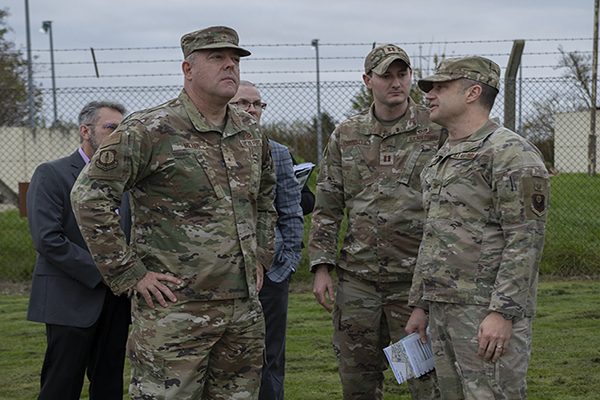
Leading the Way: Partnering for Resiliency and Readiness
TME Interview with Brig. Gen. Patrick Miller, P.E., F.SAME, USAF Commander, Air Force Civil Engineer Center -
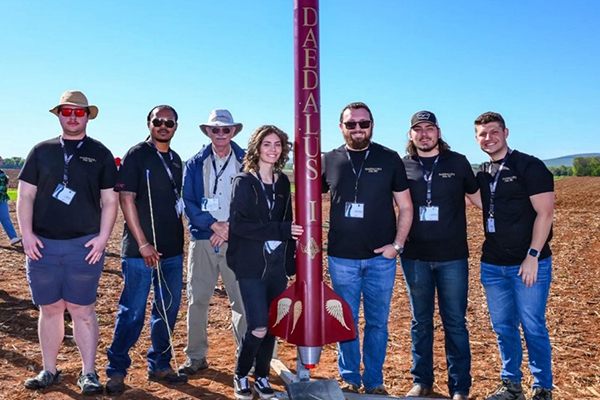
Developing Tomorrow’s STEM Workforce Through Partnership
TME recently interviewed leaders of the Panama City Post about paying it forward, their repertoire of STEM outreach, and the benefits of collaborating with similar-minded professional organizations. -

Electrifying Solutions for Military Installations
As military installations implement electrification measures into the future, the challenges they face will not just require innovative technology solutions but embracing a holistic delivery approach implemented early in projects.